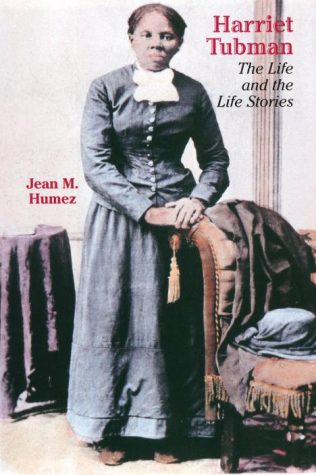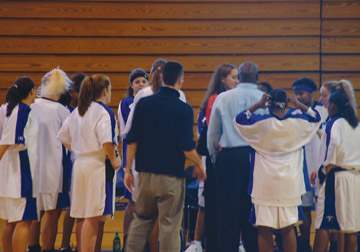Arts on the Point: New Arrivals
October 17, 2003
UMass Boston has been home to some strange and rather eclectic works of art. Now, two more famous names will be added to the UMB home base, that of an old master, Rodin, and relative newcomer, Maya Linn. Linn will design a piece to sit near the UMB Campus Center while the works of Rodin will arrive in their present form. I had a chance to talk with Paul Tucker, director of Arts on the Point, who was responsible for bringing these exciting additions to campus.
Originally, Tucker had hoped to get a Renoir sculpture, but the dealer didn’t want to part with it. However, he was able to get in touch with a collector/dealer of French art who was willing to lend Rodin’s sculptures to UMB. “They’re sitting in a warehouse in Geneva, Switzerland, cold and lonely, looking for an appreciative audience,” Tucker stated.
The two posthumous casts by Auguste Rodin that will come to UMB are part of a six-figure set known as the “Burghers of Calais” (1884-1886) from the Paris-based Musee du Rodin, established by Rodin when he donated all of his possessions and pieces in 1916. The two pieces are casts of the originals that reside in the Musee du Rodin, this being the only institution with the license to make copies of any of Rodin’s works.
The “Burghers of Calais” were derived from an actual event that occurred during the Hundred Years’ War, a sporadic struggle between England and France over the English claim to the French throne. The incident in question took place in 1347, when the city of Calais was besieged by the English king, Edward III. In exchange for his cessation of the crippling 11 month siege, six of the leading gentry offered to act as hostages. Slated for execution, they walked out with nooses around their necks until Edward III’s then-pregnant wife, Philippa, persuaded him to let them go, fearing their murders would be a bad omen. So impressed by the courage and passion of the tale, Rodin created this series as the product of an 1885 commission from Calais.
Two of the life-sized figures of “Burghers of Calais” are of the same man, one clothed and one naked, urging the other five onward. The before-and-after aspects to the sculpture mean that the viewers “all participate variously in the conception and evolution of the piece,” states Tucker. Though there was some vandalism done to the specialized foundations before Stinger was placed, Tucker isn’t worried about security. “One of the happy things is that the sculptures have been respected by everyone.” Thanks to private donations, the Rodin works could possibly arrive at the end of the 2003 fall semester.
Maya Lin is a name well known to most people. At the age of 21, while a student at Yale, she designed the 1982 Vietnam War Memorial in West Potomac Park as well as Yale’s own Women’s Table. An artist, sculptor, and architect, she manages to combine her disciplines so that one can never really pigeonhole her into a single discrete category. Chosen over 1,400 other applicants, she also designed the Civil Rights Memorial in 1989. No stranger to strife, she is the daughter of two Chinese immigrants who fled to the United States in 1948.
Lin’s future work will be the latest piece to come to the sculpture park that comprises Arts on the Point, a plethora of site- and non-site-specific installation works. One of her most well-known pieces is The Wave Field, a succession of fifty separate mounds of grass in rows of eight covering 10,000 square feet of the surface of the University of Michigan in Ann Arbor. A soothing, rolling piece of turf, it makes one think of the symmetrically, sinuous curves of a sound wave, harkening back to physics and some of the most ancient themes in art involving snakes. An Ohio native, perhaps she takes her inspiration from the mysterious Serpent Mound supposedly designed by the early Native American peoples.
Lin will be coming to UMass in the spring of 2004 to view the new Campus Center. Currently, she is working on six other projects and has been waiting for the center’s completion to see the space she has to work with and how to create an earth-scape that will complement and complete the architecture of UMB’s newest building.






















































